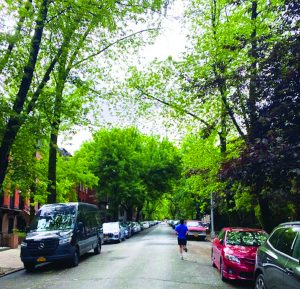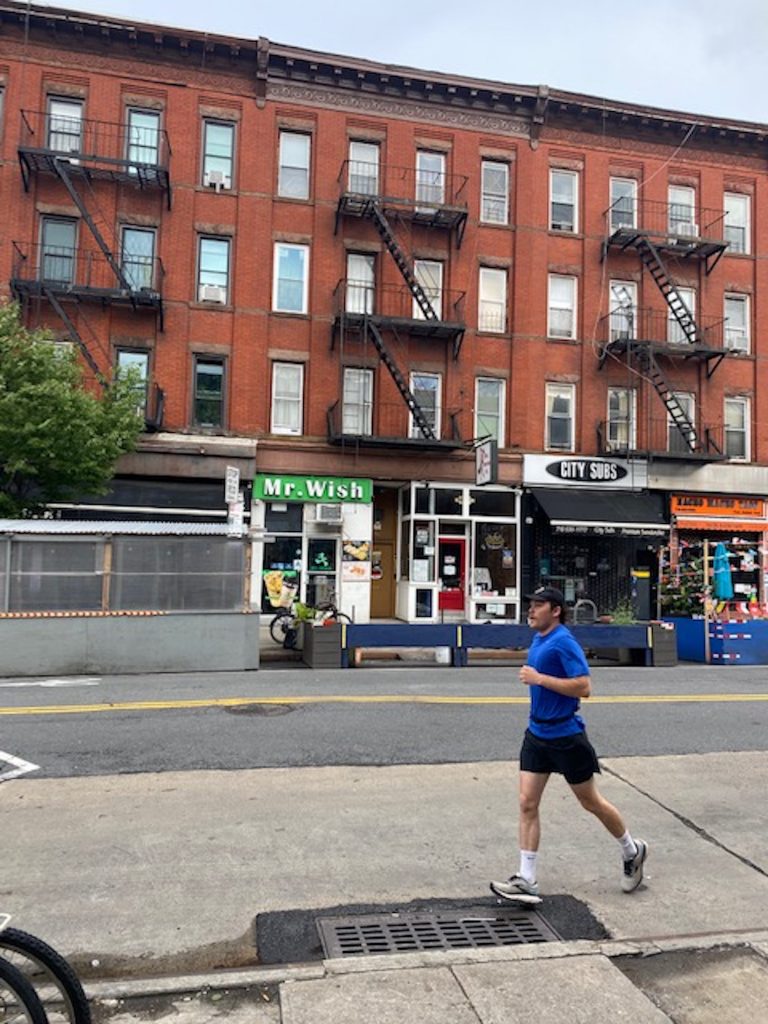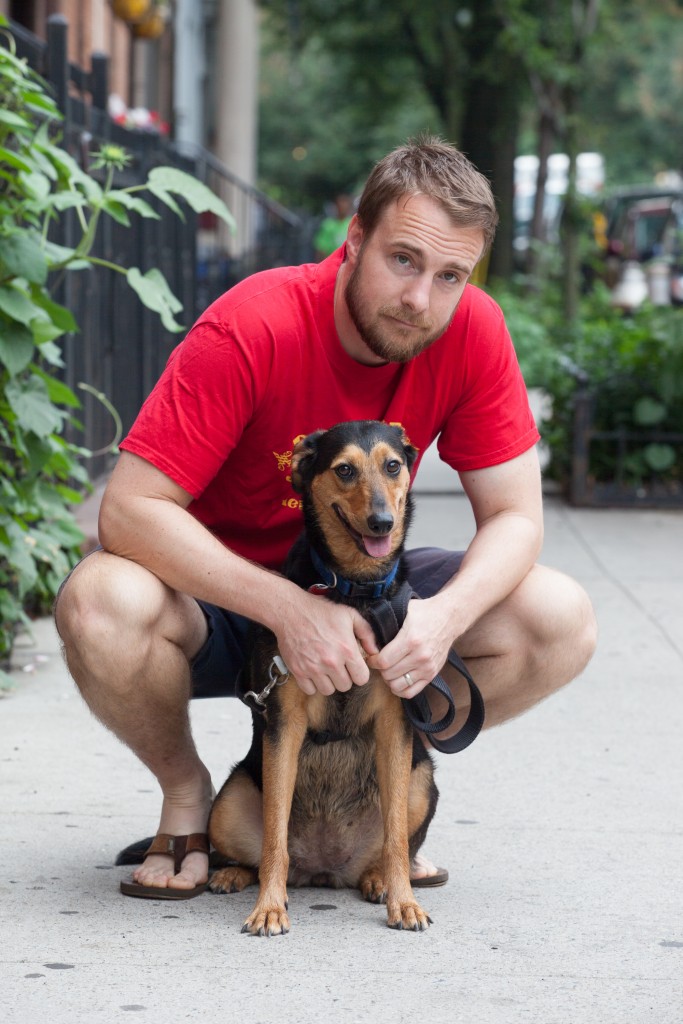Summer breathes new life into Park Slope, and the best way to see the neighborhood is on a late-morning run.

Last spring, when I started running, all I had was a pair of Nike Internationalists, the same shoes Anthony Michael Hall wore in 1985 when he played the part of Brian Johnson, better known as “The Brain,” in The Breakfast Club.
Simply put, I wasn’t accustomed to the sport. The idea of becoming a runner sounded like a dreadful way to spend my evenings after work and a stressful way to wake up in the morning.
But when the pandemic hit, I, like so many other New Yorkers, experienced a staggering drop in my activity levels. I lost my daily commute to and from my office in Manhattan, traded going out for lunch and dinner for ordering in, and stopped walking over to my friends’ and family members’ apartments after work and on weekend afternoons.
My days consisted of lifting my head off of my pillow and dragging my feet over to the kitchen table, where I’d sit and work for eight hours before moving to the couch to read or watch television until midnight hit. Rinse and repeat.
After losing my mind for a month or two, I decided it was a good idea to lace up my thrift store Nikes and get some fresh air. Early on, I’d jog from my apartment on the corner of 5th Avenue and Warren Street to Grand Army Plaza, where, after staring at the Soldiers’ and Sailors’ Arch for a few minutes, I’d often decide to turn around and jog home.
For the runners out there reading this and grimacing at the idea of running with heavy, unforgiving footwear, don’t worry. The Nikes didn’t last too long. My birthday was around the corner, which meant an early present from my girlfriend: a new pair of Brooks from Brooklyn Running Company.
Before long, my two-mile jogs turned into four-to eight-mile runs. I began to trust my feet to navigate the cracks on the jagged Park Slope sidewalks and lifted up my head to see. On Saturdays throughout the summer, I’d take my long runs.
I’d start outside my apartment and smell the potato pancakes and fresh pita bread being served for brunch at Miriam across the street. I’d look to my left and see the bartenders at Lizzy King’s Irish Pub setting up tables in the middle of a blocked-off section of 5th Avenue while the musician was tuning up his guitar to play.

I’d turn right on 6th Avenue, where the towering brownstones would provide some shade until I hit Union Avenue, where I’d turn left. On Union, the smell of natural soaps, yeast, and essential oils would pour out of the Park Slope Food Coop and onto the sidewalk, where dozens of people were waiting in line to get in.
Running up Union towards Prospect Park will remind you why the neighborhood is called Park Slope. The street, particularly on a hot New York day, is a deceivingly steep hill. But if your legs are able to muster it, the real treat, the farmers market, awaits at Prospect Park.
Here is where I’d typically slow down to soak it in. I’d tune into the picking of the bluegrass band, often playing on the shaded hill that hugs the entrance to the exercise path. I’d smell the lavender and soap filling the warm summer air, and I’d fantasize about the frozen apple cider I’d get after my run.
Crossing the Prospect Park bike path and entering the running lane is like merging onto the Brooklyn-Queens Expressway. It operates with a sense of organized chaos, with walkers, joggers, runners, and sprinters of all ages subconsciously dodging each other while they move to the beat pulsing through their AirPods.
On Saturdays, I’d do the full loop, which the Prospect Park Alliance tells me is 3.35 miles long. At the first bend, on the South Slope corner of the park, I’d see young children on the backs of horses that had been walked over from Prospect Park Stables, just a few hundred yards away.
After the bend, I’d stop at the lake where parents teach their children how to fish while trying to avoid casting into a duck, swan, or goose. Around the loop, on the Prospect Lefferts Gardens side of the park, I’d turn my head left, peer through the trees and see the Concert Grove Pavilion, which served as the set to the famous dog wedding scene in “Broad City.” By turning my head to the right, I’d see generations of families grilling out and absorbing the sun.
At the end of the loop, if I didn’t succumb to the temptation of buying a frozen apple cider, I’d exit the park and make my way down 7th Avenue, past Community Bookstore and over to Millenium Brooklyn High School on 4th Street, where I’d slow down my pace and jog to cool down on my way home.
Summer breathes new life into the Park Slope, and running has helped me see the neighborhood in a way that I never had before. My favorite season is summer, and my favorite day is Saturday. There are only 12 Saturdays each summer, and in 2021 I’ll spend them running.

